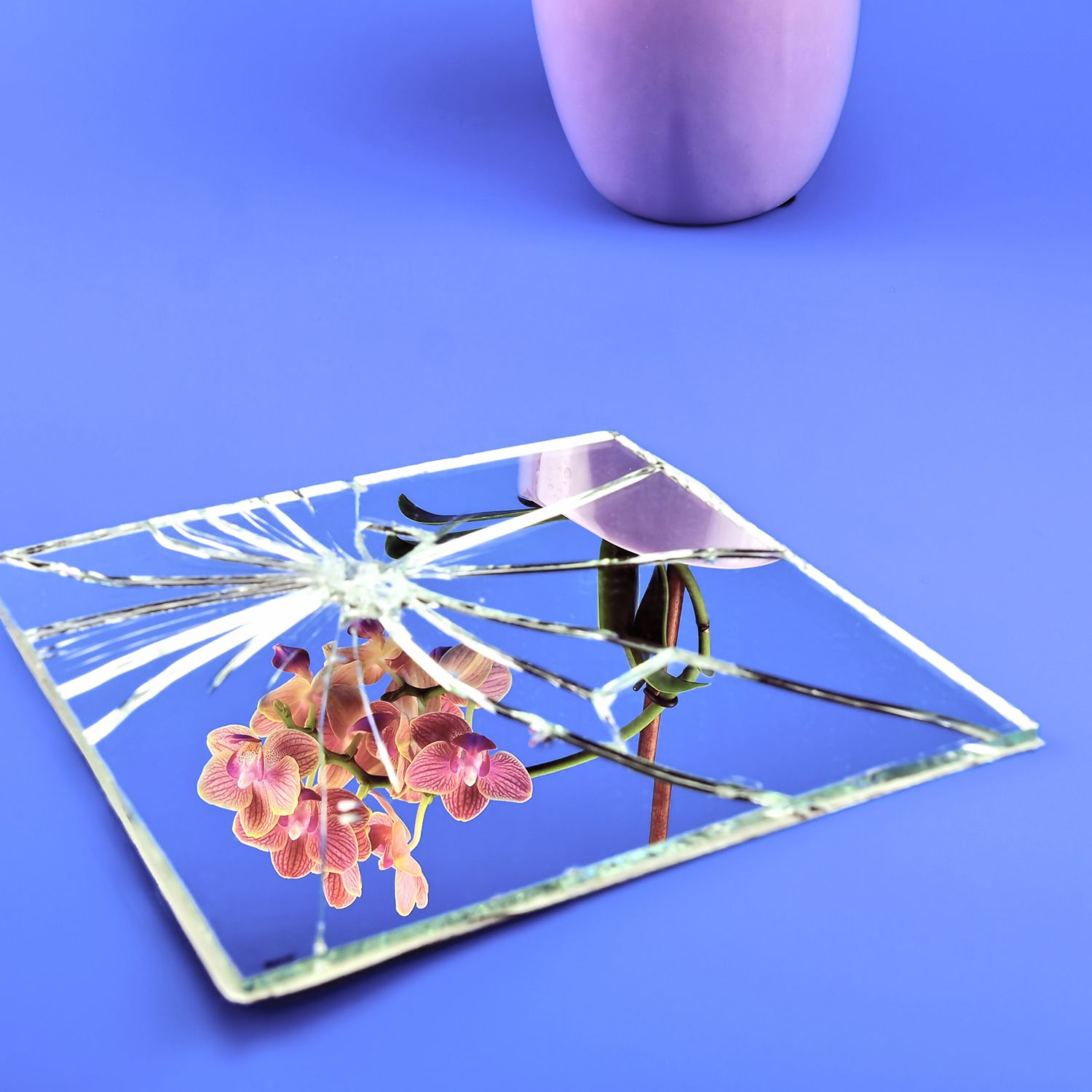Vaginal Rejuvenation: A Cut Below
The new frontier for plastic surgery is between your legs. Is this fast-growing practice solving a real-life problem or creating a nation of neurotics?

ON-SCREEN, a woman's mons pubis is being injected with a viscous liquid. A plastic surgeon then kneads the vaginal lips like dough, forming them into two swollen mounds. The next two slides in the presentation are side-by-side comparisons of the labia and a Volkswagen Beetle. The surgeon, who is from Latin America, notes the similarity in shape between the woman's labia and the Beetle's fenders. "In my country, women like an exuberant vagina," he says, as heads in the audience nod.
Which begs a question that had never occurred to me: Was my vagina exuberant? Throwing confetti, dancing on tables—a real party vagina? Or was it more shy and demure—the Emily Dickinson of genitalia? I'd never actually looked. In fact, that may be the one part of my body I'd never worried about. Should I start?
I'm attending a two-day presentation on gynocosmetology, part of the weeklong conference of the American Academy of Cosmetic Surgery (AACS). Here, physicians are discussing the latest in cooch aesthetics. Not all new techniques are greeted with equal enthusiasm. The Latin American surgeon's presentation was shouted down by colleagues because the material he was injecting into his patient's labia, a cousin of silicone, is not FDA-approved. (In the U.S., injecting the body's own fat to swell the labia is the accepted practice.)
Blame it on the prevalence of Brazilian waxing, where we all get a much, much clearer idea of what we look like down there; or perhaps the ubiquity of porn, where a certain uniform industry standard has created an "I'll have what she's having" mentality. Or maybe it's the fact that gynecologists and obstetricians, who are seeing their incomes slashed by insurance companies, saw a demand in the marketplace for the procedures and were not averse to meeting (and perhaps stoking) the need. Whatever the case, the number of purely cosmetic operations for vaginal rejuvenation, as it's popularly known, has escalated significantly over the past few years. A survey by the AACS projected that there were 53,332 vaginal rejuvenations performed by all U.S. physicians in 2009. Among AACS members alone, there was an increase of more than 50 percent in these surgeries during 2008. And while the term rejuvenation is used, it's a bit misleading since more than 60 percent of all these procedures are performed on women 20 to 39.
There are, of course, gynecologic surgeons at the conference who mostly perform reconstruction of the vulvar area after cancer, traumatic pregnancies, or other serious medical situations. With labiaplasty, for example, there is sometimes a bona fide medical reason women have their labia surgically reduced. Miami plastic surgeon Dr. Lee Gibstein describes a bike racer with "very large labia majora" (the outer folds of skin). "After long hours of practice, the labia would be chafed and swollen, and sometimes they would bleed," said Gibstein. "Having the skin cut away made it possible for her to race comfortably."
But this was a conference about aesthetics, and also perhaps about the delicate interplay between form and function. And most of the time, labiaplasty is just a cosmetic preference. At the conference, Dr. Red M. Alinsod, who runs the South Coast Urogynecology Center in Laguna Beach, California, showed slides of labiaplasties with various degrees of the labia majora (outer lips) and labia minora (inner lips) trimmed. One slide he dubbed "The Full Barbie." The Barbie featured no inner labia at all. It is a look, he says, that is "refined." (Cost: $3,000 to $6,000.)
Perhaps you don't want your labia cut away; perhaps you want them enhanced. According to many of the surgeons at the conference, both massive weight loss (common after bariatric surgery) and aging can make the labia loose and saggy; consider the rather unfortunate British expression, "hanging ham." Now doctors can harvest fat cells and plasma from another area of the body—often the buttocks—and inject them into the labia, plumping them up and "restoring youthful contours," says Gibstein. (Cost: $1,500 to $6,000.)
Stay In The Know
Get exclusive access to fashion and beauty trends, hot-off-the-press celebrity news, and more.
Vaginoplasty, probably the most common of vaginal rejuvenation procedures, tightens the walls of the vagina via suturing—usually after repeated childbirths have loosened them. "A vagina is not unlike a cave," says Alinsod. "The angle of entry differs, and the width differs, particularly after childbirth. We're physically bringing the tissue together, which means more pleasure for both parties." (Cost: $4,500 to $8,500.)
Another impediment to pleasure may be solved by a hoodectomy, or clitoral unhooding. Did every muscle in your body clench at the mere mention of this procedure? Mine too. And yet, there are women who apparently have enough thickened skin over their clitoris (the anatomical equivalent of the foreskin on men) to prevent them from reaching orgasm. (Cost: about $2,500.)
Tightness or lack of pleasure may not be a problem for women seeking hymenoplasty, or revirgination—but mother-in-laws may be. In Muslim culture, for example, where virginity is prized, a woman's soon-to-be mother-in-law might accompany her to the doctor to make sure she is giving the "ultimate gift" to her son. And sometimes women have kind of misplaced that gift, perhaps through exercise, perhaps through other means. That's where hymenoplasty comes in. Doctors go into the vagina and suture together the tissue remnants of the hymenal ring, creating an intact bride. (Cost: about $5,000.)
MANY OF THESE SURGEONS tend to see themselves as Cyranos with a scalpel. At the conference, the oft-voiced opinion was, "These surgeries save relationships." One doctor even posted a slide that read, "Breasts catch a man, but a tight vagina keeps him." Suffice it to say there were not a lot of women surgeons present at this event.
Also not present were the substantial contingent of physicians and psychologists who see vaginal surgery as just another example of the culture telling women there's something wrong with their natural selves. "This is an industry preying on women who feel bad about their genitals," says Sheri Winston, therapist, sex educator, and, most recently, author of Women's Anatomy of Arousal: Secret Maps to Buried Pleasure. "Women are taking totally normal vulvae and making them look like standard porn vulva, where the inner lips are smaller than the outer lips and the outer lips cover the inner lips. The look is prepubescent."
It's odd, when you stop to think about it. As feminists, we feel obliged to honor women's right to choose how they want to enhance their self-esteem and sexuality—which these cosmetic procedures are meant to do. Yet when these surgeries go wrong, as they sometimes do, they can be damaging—not unlike the genital mutilations feminists worldwide oppose.
San Diego gynecologist and obstetrician Dr. Wendy Buchi notes that surgical side effects can include infection and bleeding, altered sensation, painful intercourse, and lifelong scarring. "I have seen a woman who had her clitoral hood 'reduced' because she didn't like the way it could be seen between her labia," says Buchi. "The surgeon removed as much as he needed to so that it was not visible. This resulted in an inadequate protection for the clitoris and unbearable, constant sensation that made it difficult for her to walk. She required additional surgeries to rebuild the clitoral hood."
Then there was the case of a tightening gone wrong. The whole point was to improve the patient's sensation during sex, along with her partner's. "But the result," says Buchi, "was a vagina so tight and inflexible that intercourse was no longer possible."
ME? I'M A BIG BELIEVER in a woman's right to do anything she pleases with her body in the name of feeling better. Lop off your fat, get bigger breasts, iron out the wrinkles. God knows I do. And when it comes to the hoo-hoo, there are already any number of treatments out there to make us feel unique and dainty. I mean, I think if I got myself "vajazzled" at Completely Bare spa, somehow glue-gunning Swarovski crystals to my labia, any self-respecting guy would laugh himself silly (and then, hopefully, choke on them).
But I can understand the whim, just as I understand the desire for the "vajacial" at the Stript Wax Bar in San Francisco, a post- Brazilian treatment that includes exfoliation with papaya enzymes, an antibacterial wash, and a lightening cream to even out skin tone. I see, in some dim way, the fun of My New Pink Button, a "temporary dye to restore the youthful pink color back to your labia," as the website says—the operative word here being temporary.
I even can see how a major procedure like the tightening of the vagina can add to a couple's pleasure during sex. There is something about the ability to feel a man "fill you up" that has a psychological benefit to both partners—it's not just the man's desire to feel large but the woman's desire to feel a kind of embrace.
But one has to wonder whether any of this would really make or break a genuine, loving relationship. Do we really have to try that hard? As my friend Spencer put it: "I'm a guy. I'm just glad to be anywhere in the general vicinity of a vagina."
Continue the vagina conversation:
The Current State of The Vagina
6 Vagina Accessories to Splurge On
How Do You Take Care Of Your Area?
Which Pubic Hairstyle Is Right For You?
-
 The 'You' Season 5 Cast Features People From Joe's Past, a New Love Interest, Madcap Twins, and More
The 'You' Season 5 Cast Features People From Joe's Past, a New Love Interest, Madcap Twins, and MoreHere's what to know about the star-studded final installment of the Netflix hit.
By Quinci LeGardye
-
 These J.Crew Sale Finds Basically Packed My Suitcase for Me
These J.Crew Sale Finds Basically Packed My Suitcase for MeI'm ready for my next vacation.
By Brooke Knappenberger
-
 Summer's Sportiest Shoe Trend Is Worth Shopping More Than Once
Summer's Sportiest Shoe Trend Is Worth Shopping More Than Once17 pairs from Nordstrom, Mango, and Zara I'm shopping now.
By Julia Marzovilla
-
 My Healing Journey After Sexual Assault
My Healing Journey After Sexual AssaultTo recover from an assault at the hands of a friend, I spent months experimenting with different therapies.
By Remy Ramirez
-
 What Role Can Genetic Testing Play in IVF and Egg Freezing?
What Role Can Genetic Testing Play in IVF and Egg Freezing?Before trying to conceive couples can undergo carrier screening to see if they have an mutations in their DNA that could lead to a health issue for their baby. They can also test eggs or embryos created during IVF for chromosomal abnormalities and more.
By Jennifer Gerson
-
 What Kind of Testing Will My Fertility Specialist Conduct?
What Kind of Testing Will My Fertility Specialist Conduct?If you're having trouble conceiving naturally and make an appointment with a fertility specialist, he or she may order the following blood and/or urine tests to check several different hormones and determine what might be stopping you from conceiving.
By Jennifer Gerson
-
 Can Men Cause Fertility Issues?
Can Men Cause Fertility Issues?Issues with the male reproductive system actually contributes to as much as 50 percent of fertility struggles. Read on for some of the ailments that can affect sperm quality and motility, as well as other hormonal and anatomical problems that might prevent a couple from getting pregnant.
By Jennifer Gerson
-
 Why Can't I Get Pregnant?
Why Can't I Get Pregnant?There are numerous medical conditions that can lead to fertility issues in women. Some of them include ovulation disorders, endometriosis, and, yes, maternal age. Read on about more causes and how they impact pregnancy here.
By Jennifer Gerson
-
 How to Stay Sane While Struggling to Get Pregnant
How to Stay Sane While Struggling to Get PregnantHow To We've got you (and the torturous Two Week Wait) covered.
By Colleen Leahey McKeegan
-
 The Wild World of IVF, Explained
The Wild World of IVF, ExplainedFeatures Everything you need to know before your first shot of hormones.
By Pamela Tsigdinos
-
 What Is the Process Like for Freezing Your Eggs?
What Is the Process Like for Freezing Your Eggs?Since the quality and number of eggs a woman has goes down with age, increasingly, women are electing to freeze their eggs when they are young. A fertility expert breaks down what that process is like, and how successful you can expect it to be when you choose to thaw the eggs.
By Jennifer Gerson